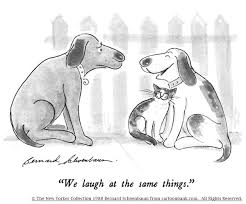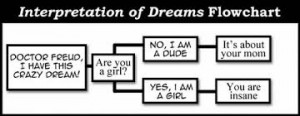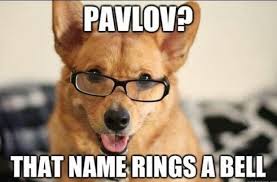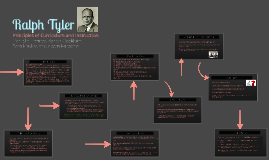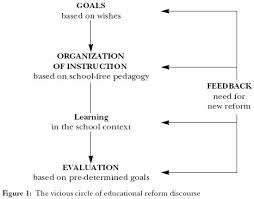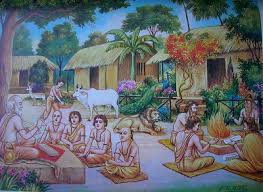Dr. V.K.Maheshwari, M.A(Socio, Phil) B.Sc. M. Ed, Ph.D
Former Principal, K.L.D.A.V.(P.G) College, Roorkee, India
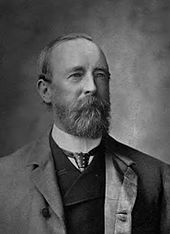
Before the birth of the National Congress, a number of organisations were formed, but most of them had limited objectives .In order to draw the attention of the British public opinion towards the welfare of the Indians in 1866, Dadabhai Naroji established East Indian Association in London. Mahadeva Govinda Ranade formed the Madras Mahajana Sabha in 1881 and also the Poona Sarvajanik Sabha in 1867 for social reforms and national awakening. In 1885, the Bombay Presidency Association was formed under the leadership of persons like Feroz Shah Mehta, Badruddin Tayabji etc. with the aim of awakening national consciousness.
However, among all these organisations, the Indian Association established under the leadership of Surendra Nath Banerjee and Anand Mohan Bose, actively attempted to form a strong public opinion against the unjust policies of the British Government. It organised a number of peasant demonstrations demanding reduction of the rate of revenue. With a view of bringing representatives from all over India to a common platform, the Indian Association organised All-India National Conferences twice in 1883 and 1885. But the Indian public opinion could be organised and articulated only with the formation of Indian National Congress as a national forum.
A.O. Hume’s name shines like a star. His greatest contribution was his founding the Indian National Congress. Hume, the son of Joseph Hume, a prominent Scottish member of the House of Commons, was a brilliant civil service officer of the British Government, was loyal to his motherland and his government, but was equally sympathetic with the miserable predicament of Indians under the British regime. When he was posted as the Director-General of Agriculture ., he came into direct touch with the difficulties in which the farmers and farm workers of rural India lived. He took up the case of these poor people and argued for them in the Government. ‘Hints on Agricultural Reforms ’ was a report he prepared in which he discusses the urgent need for a change in the law and rule governing the agricultural life in . It is a valued document relevant even now. Soon Hume was appointed Home Secretary in 1870. Though the administration was taken over from the East India Company by the Queen herself, the situation was moving from bad to worse. More taxations, more police atrocities, and the people continued to live in abject poverty and slavery. This was too much for A.O. Hume and in protest against the government’s administrative policies, he resigned from service and entered into a life of peace, But he had already entered into an endeavour towards the formation of a national organization for forming a bridge between the rulers and the ruled.
Some of the Indian national leaders such as Dadabhai Naoroji, C. S. Subrahmoniya Iyer, Surendranath Banerjea, Dewan Bahadur Raghunatha Rao and others held a meeting in Madras and discussed the possibility of forming a national organization. This culminated in the birth of the Indian National Congress.
Allan Octavian Hume, was instrumental in the formation of Indian National Congress. The first session of the All India Congress began on 28th December 1885 at Gokuldas Tejpal Sanskrit College. Eminent barrister of Calcutta, Mr. Woomesh Chandra Banerjee presided over it. Seventy two invited delegates from different parts of India assembled in this first session. Mr. Hume was elected as the first general secretary of the Indian National Congress.
In reality Indian National Congress was an English Product. It is an undisputed historical fact, that the idea of the Indian National Congress was a product of Lord Dufferin’s brain; that he suggested it to Mr. Hume to form an association which might function on the model of the opposition party of Britain, and that the latter undertook to work it out. We have no means of knowing whether Mr. Hume communicated the fact to all the Indian leaders who joined hands with him in organising it, but in all probability he told some of them. It leaked out, however, in Lord Dufferin’s lifetime, was published in the press, brought to his notice and never denied by him. Nor did Mr. Hume, who died only in 1912, ever deny it. It has since been admitted to be true by his biographer, another veteran Congress leader, Sir William Wedderburn. (Sir William Wedderburn is also a retired member of the Government of Bombay, India.) Sir William says on page 59 of his life of Mr. Hume : “Indeed in initiating the National Movement, Mr. Hume took counsel with the viceroy, Lord Dufferin; and whereas he was himself disposed to begin his reform propaganda on the social side, it was apparently by Lord Dufferin’s adznce that he took up the work of political organisation as the first matter to be dealt with.” We have no hesitation in accepting the accuracy of the statement made by Sir William Wedderburn as to what Lord Dufferin told Mr. Hume, because we have no doubt of Mr. Hume’s sincerity of purpose. Lord Dufferin did evidently tell Mr. Hume that “as head of the Government, he had found the greatest difficulty in ascertaining the real wishes of the people; and that for purposes of administration it would be a public benefit, if there existed some responsible organisation through which the Government might be kept informed regarding the best Indian public opinion.” Sir William Wedderburn assures us that “ these kindly counsels (i. e., those given by Lord Dufferin) were received with grateful appreciation by all concerned,” and “indeed so cordial were the relations” between the officials and the Congress leaders that “Lord Dufferin was approached with a view to the first Congress being held under the presidency of Lord Reay, then Governor of Bombay.” We are told that Lord Dufferin welcomed the proposal as showing the desire of the Congress to work in complete harmony with the Government, but he saw many difficulties in accepting the proposal, and so the idea was abandoned. “None the less the first Congress was opened with the friendly sympathy of the highest authorities.”
Hume, a Lover of Liberty
It is obvious that when Lord Dufferin expected a political organisation to represent the best Indian opinion, it was far from his mind to suggest an organisation that would demand parliamentary government for India, or self-government even on colonial lines. What he evidently aimed at was a sort of an innocuous association which should serve more as a “safety valve” than as a genuine Nationalist organisation for national purposes. Mr. Hume may have meant more. He was a lover of liberty and wanted political liberty for India under the cages of the British crown. He was an English patriot and as such he wanted the continuance of British connection with India. He saw danger to British rule in discontent going underground, and one of his objects in establishing the Congress was to save British rule in India from an impending calamity of the gravest kind which he thought was threatening it at that time. In his reply to Sir Auckland Colvin,( Sir Auckland Colvin was the Lieutenant Governor of the then North Western Provinces (now the United Province of Agra and Oudh). he admitted that “a safety valve for the escape of great and growing forces generated by” British “connection, was urgently needed, and no more efficacious safety valve than” the “Congress movement could possibly be devised.” This correspondence between Sir Auckland Colvin, then Lieutenant Governor of the United Provinces, and Mr. Hume, reveals the whole genesis of the Congress movement, and is so clear and illuminating that no student of Indian politics can afford to neglect it.
It leaves no doubt whatsoever that the immediate motive which underlay the idea of starting the Congress was to save the Empire from “the danger” that loomed ahead “tremendous in the immediate future,” “the misery of the masses acted on by the bitter resentment of individuals among the educated class.” In the words of Mr. Hume, “no choice was left to those who gave the primary impetus to the movement. The ferment, the creation of Western ideas, education, invention, and appliances, was at work with a rapidly increasing intensity, and it became of paramount importance to find for its products an overt and constitutional channel for discharge, instead of leaving them to fester as they had already commenced to do, under the surface.” Mr. Hume further adds that though “ in certain provinces and from certain points of view the movement was premature, yet from the most important point of view, the future maintenance of the integrity of the British Empire, the real question when the Congress started, was, not is it premature, but is it too late? will the country now accept it?” Indeed, by that test, the events have proved that the Indian National Congress has been a great success, and that either Mr. Hume’s reading of the political situation was exaggerated, or that his remedy has been amply justified.
Congress to Save British Empire from Danger
But one thing is clear, that the Congress was started more with the object of saving the British Empire from danger than with that of winning political liberty for India. The interests of the British Empire were primary and those of India only secondary, and no one can say that the Congress has not been true to that ideal. It might be said with justice and reason that the founders of the Indian National Congress considered the maintenance of British rule in India of vital importance to India herself, and therefore were anxious to do everything in their power, not only to save that rule from any danger that threatened it, but even to strengthen it ; that with them the redress of political grievances and the political advance of India was only a by-product and of secondary importance. If so, the Congress has been true to its ideal, and no one can find fault with it.
On the strength of an illuminating memorandum found among his papers, Hume’s biographer has stated the nature of the evidence that “convinced” Mr. Hume at the time (i. e. about 15 months before Lord Lytton left India) that the British were “in immediate danger of a terrible outbreak.” We will give it in Mr. Hume’s own words.
“I was shown seven large volumes (corresponding to a certain mode of dividing the country, excluding Burma, Assam, and some minor tracts) containing a vast number of entries; English abstracts or translations — longer or shorter — of vernacular reports or communications of one kind or another, all arranged according to districts (not identical with ours), sub-districts, sub-divisions, and the cities, towns and villages included in these. The number of these entries was enormous; there were said, at the time, to be communications from over thirty thousand different reporters. I did not count them, they seemed countless; but in regard to the towns and villages of one district of the Northwest Provinces with which I possess a peculiarly intimate acquaintance — a troublesome part of the country, no doubt — there were nearly three hundred entries, a good number of which I could partially verify, as to the names of the people, etc. “He mentions that he had the volumes in his possession only for about a week; into six of them he only dipped; but he closely examined one covering the greater portion of the Northwest Provinces, Oudh, Behar, parts of Bundelkund and parts of the Punjab; and so far as possible verified the entries referring to those districts with which he had special personal acquaintance. Many of the entries reported conversations between men of the lowest classes,( The quotations from Hume are taken out of W. Wedderburn’s Allan Octavian Hume, the parts enclosed in parenthesis are Wedderburn’s ) “ all going to show that these poor men were pervaded with a sense of the hopelessness of the existing state of affairs; that they were convinced that they would starve and die, and that they wanted to do something, and stand by each other, and that something meant violence,” (for innumerable entries referred to the secretion of old swords, spears and matchlocks, which would be ready when required. It was not supposed that the immediate result, in its initial stages, would be a revolt against the Government, or a revolt at all in the proper sense of the word. What was predicted was a sudden violent outbreak of sporadic crimes, murders of obnoxious persons, robbery of bankers, looting of bazaars). “ In the existing state of the lowest half-starving classes, it was considered that the first few crimes would be the signal for hundreds of similar ones, and for a general development of lawlessness, paralysing the authorities and the respectable classes. It was considered also, that everywhere the small bands would begin to coalesce into large ones, like drops of water on a leaf; that all the bad characters in the country would join, and that very soon after the bands obtained formidable proportions, a certain small number of the educated classes, at the time desperately, perhaps, unreasonably, bitter against the Government, would join the movement, assume here and there the lead, give the outbreak cohesion, and direct it as a national revolt.”
To this, Sir William Wedderburn adds further from his own personal knowledge : ‘ The forecast of trouble throughout India was in exact accordance with what actually occurred, under my own observation, in the Bombay Presidency, in connection with the Agrarian rising known as the Deccan riots. These began with sporadic gang robberies and attacks on the money lenders, until the bands of dacoits, combining together, became too strong for the police; and the whole military force at Poona, horse, foot, and artillery, had to take the field against them. Roaming through the jungle tracts of the Western Ghauts, these bands dispersed in the presence of military forces, only to reunite immediately at some convenient point ; and from the hill stations of Mahableshwar and Matheran we could at night see the light of their campfires in all directions. A leader from the more instructed class was found, calling himself Sivaji, the Second, who addressed challenges to the Government, offered a reward of 500 rupees for the head of H. E. Sir Richard Temple (then Governor of Bombay), and claimed to lead a national revolt upon the lines on which the Mahratta power had originally been founded.”
So in the words of these two leaders, the immediate motive of the Congress was to save the British Empire from this danger. There is, however, one difficulty in believing outright that this was the immediate reason of the birth of the Congress. Mr. Hume is said to have seen this evidence at the time he was in the service of the Government, viz., fifteen months before Lord Lytton left India. Between then and the first meeting of the Congress in 1885 intervened a period of about seven years. During this time Lord Ripon was viceroy for five years. The idea of starting a political organisation on the lines of the Congress is said to have originated with Lord Dufferin.
This is a little inconsistent with the theory that the Congress was founded out of fear of a political out- break and only in the nature of a safety valve. Nor is the latter theory consistent with Mr. Hume’s first political manifesto addressed to the graduates of the Calcutta University in March, 1883. This document is so manly in its outspokenness, so true in its principles, that we will quote the whole of it (or at least as much of it as is given in Mr. Hume’s biography). Addressing the graduates of the university, Mr. Hume said : ” Constituting, as you do, a large body of the most highly educated Indians, you should, in the natural order of things, constitute also the most important source of all mental, moral, social, and political progress in India. Whether in the individual or the nation, all vital progress must spring from within, and it is to you, her most cultured and enlightened minds, her most favoured sons, that your country must look for the initiative. In vain may aliens, like myself, love India and her children, as well as the most loving of these; in vain may they, for her and their good, give time and trouble, money and thought; in vain may they struggle and sacrifice; they may assist with advice and suggestions; they may place their experience, abilities and knowledge at the disposal of the workers, but they lack the essential of nationality, and the real work must ever be done by the people of the country themselves.” “Scattered individuals, however capable and however well meaning, are powerless singly. What is needed is union, organisation and a well defined line of action ; and to secure these an association is required, armed and organised with unusual care, having for its object to promote the mental, moral, social and political regeneration of the people of India. Our little army must be sui generis in discipline and equipment, and the question simply is, how many of you will prove to possess, in addition to your high scholastic attainments, the unselfishness, moral courage, self-control, and active spirit of benevolence which are essential in all who should enlist?”
Even truer and nobler are the sentiments in the final appeal which ended this letter and which runs thus: “ As I said before, you are the salt of the land. And if amongst even you, the elite, fifty men can not be found with sufficient power of self-sacrifice, sufficient love for and pride in their country, sufficient genuine and unselfish heartfelt patriotism to take the initiative, and if needs be, devote the rest of their lives to the cause, then there is no hope for India. Her sons must and will remain mere humble and helpless instruments in the hands of foreign rulers, for ‘they who would be free, themselves must strike the blow.’ And if even the leaders of thought are all either such poor creatures, or so selfishly wedded to personal concerns, that they dare not or will not strike a blow for their country’s sake, then justly and rightly are they kept down and trampled on, for they deserve nothing better. Every nation secures precisely as good a government as it merits. If you, the picked men, the most highly educated of the nation, can not, scorning personal ease and selfish ends, make a resolute struggle to secure freedom for yourselves and your country, a more impartial administration, a larger share in the management of your own affairs, then we, your friends, are wrong, and our adversaries right ; then are Lord Ripon’s aspirations for your good, fruitless and visionary ; then, at present, at any rate, all hopes of progress are at an end, and India truly neither lacks nor deserves any better government than she now enjoys. Only, if this be so, let us hear no more factious, peevish complaints that you are kept in leading strings, and treated like children, for you will have proved yourselves such. Men know how to act. Let there be no more complaints of Englishmen being preferred to you in all important offices, for if you lack that public spirit, that highest form of altruistic devotion that leads men to subordinate private ease to the public weal, that true patriotism that has made Englishmen what they are, then rightly are these preferred to you, and rightly and inevitably have they become your rulers. And rulers and taskmasters they must continue, let the yoke gall your shoulders ever so sorely, until you realize and stand prepared to act upon the eternal truth, whether in the case of individuals or nations, self-sacrifice and unselfishness are the only unfailing guides to freedom and happiness.”
Mr. Hume was too noble not to mean what he said, and the present writer has no doubt but that Mr. Hume was absolutely sincere in what he said. He had a passion for liberty. His heart bled at the sight of so much misery and poverty as prevailed in India, and which according to him was preventable by good government. He burned with indignation at the “cowardly” behavior of his countrymen towards Indians, and he could not help feeling ashamed at the way in which pledges given and promises made were being ignored. He was an ardent student of history and knew full well that no government, whether national or foreign, had conceded to popular demands without pressure from below. In the case of an alien government, the chances were even still more meagre. He therefore wanted the Indians “to strike” for their liberty if they wanted it. The first step was to organise. So he advised organisation.
Nor are we prepared to believe that men like Ranade, Tilak, Naoroji, W. C. Bonnerjea, Ajudhia Nath, and Tyabji, were only tools in the hands of the Britishers. No, we do not think so. They were all true and good patriots. They loved their country and they started the Congress with the best of motives. It is possible that with some British sympathizers, the interests of the British Empire were primary, and they sided with the Congress because they believed that thereby they could best secure the Empire; but the writer of this book knows from personal experience how deeply the love of humanity and liberty is embedded in the hearts of some Britishers, and he is compelled to believe that at least some of those who showed their sympathy with the Congress were of that kind.
The Imperialist Junker and Jingo calls such men “Little Englanders,” but the truth is that their hearts are too big to be imperial. They believe in humanity, and in liberty being the birthright of every human being. In their eyes a tyrant, one who robs others of their liberty, one who bases his greatness on the exploitation of others, or deprives them of their rights by might or clever diplomacy, does not cease to be so by the fact of his being their countryman. They are patriots themselves and will shed the last drop of their blood in the defense of their liberty, and in the defense of their country’s liberty and independence, but their patriotism does not extend to the point of applauding their country’s robbing others of theirs. Yes, there are Britons who are sincere friends of the cause of liberty all over the globe. They deplore that their country should be ruling India at all, and if it were in their power, they would at once withdraw from India. Some of these sympathies with the Indian Nationalists in all sincerity, and have done so ever since the Indian National Congress was started, or even from before that time. It is no fault of theirs, if the Indian Nationalist Movement has not been such a success as they would have wished it to be, and if it has not been able to achieve anything very tangible. The fault is purely that of the Indians, and of the Indians alone, or of the circumstances.
Mr. Hume was quite sincere in his motives, but he forgot that a political organisation started at the instance or even with the approval of the rulers whose power and emoluments it proposed to curtail, whose despotism and principles it questioned, in short, whom it proposed to displace and dethrone, was an anomaly; it was unnatural. In their desire to have an easy and unopposed start, the Indian founders of the National Congress forgot their history, and consequently ignored the truth that “those who wanted to be free must themselves strike the blow,” and that it was monstrous to expect those against whom the blow was aimed to bless the striker and the striking. We do not agree with Mr. Gokhale that “no Indian could have started the Indian National Congress” and that “if the founder ofthe Congress had not been a great Englishman and a distinguished ex-official, such was the official distrust of political agitation in those days that the authorities would have at once found some way or other to suppress the movement.”
First, political agitation did not start with the Congress. It had been started before and no attempt to suppress it had succeeded. Second, the distrust of political agitation in India was not greater in those days than it is now and has been during the life of the Congress. But if it be true that the movement could not have been started by an Indian or by the combined efforts of many Indians, all we can say is that that itself would be proof of its having been started before time and on wrong foundations.
Had not Mr. Hume said that “whether in the individual or the nation, all vital progress must spring from within,” and that it was “to her own sons that the country must look for the initiative?” Did not Mr. Hume say in his manifesto of 1883 that “in vain may aliens like myself love India . . . in vain may they struggle and sacrifice . . . they may assist with advice and suggestion, but they lack the essential of nationality, and the real work must ever be done by the people of the country themselves?”
These may be only truisms, but they are fundamental and any political effort made in defiance of them must be futile and impotent. The Indian leaders of the Congress have never fully realised the absolute truth of these principles and the result is the comparatively poor record of the Congress. In his original manifesto issued in 1883, Mr. Hume wanted fifty Indians “with sufficient power of self sacrifice, sufficient love for and pride in their country, sufficient genuine and unselfish heartfelt patriotism to take the initiative and if needs be to devote the rest of their lives to the cause.”
Of course there were many times fifty men of that kind in the country, even then, who were devoting their lives to the service of their country, but not in the political line. It took the Congress and the country, by working on Congress lines, more than twenty years to produce fifty, many times fifty, such men to devote their lives to the political cause. But unfortunately these are neither in the Congress, nor of the Congress. Barring Mr. Dadabhai Naoroji and the late Mr. Gokhale, can be said to have devoted their lives, in the way Mr. Hume wanted them to do, to the Congress cause?. But very few of them have ever been active in the Congress or for the Congress. Within the same period many Indians have given away many hundreds of thousands of rupees, some the whole earnings of a lifetime, in aid of education or for other public or charitable purposes; but the Congress work has always languished for want of funds. The British Committee of the Indian National Congress, located in London, have never had sufficient money to do their work decently. The expenses of the British Committee have largely fallen on Sir William Wedderburn. He and Mr. Hume between them spent quite a fortune on the movement. No single Indian is said to have spent even a fraction of that. The question naturally arises,— why has it been so ? The answer is obvious. The movement did not appeal to the nation. The leaders lacked that faith which alone makes it possible to make great sacrifices for it.
In the early years of the Congress there was a great deal of enthusiasm for it among the English educated Indians. So long as no attempts were made to reach the masses and carry on the propaganda among the people, the officials expressed their sympathy with the movement. Lord Dufferin even invited the members as “distinguished visitors” to a garden party at Government House, Calcutta, when the Congress held its second session in that city in 1886. In 1887 the Governor of Madras paid a similar compliment to them at Madras,( These compliments have been renewed of late. The Congress held at Madras in 1914 was attended by the British Governor of the Presidency
The Congress Lacked Essentials of a National Movement
Ever since then the Congress has cared more for the opinion of the Government and the officials than for truth or for the interests of the country. Again the question arises, why ? And the reply is, because the leaders had neither sufficient political consciousness nor faith. They had certain political opinions, but not beliefs for which they were willing to suffer. They were prepared to urge the desirability of certain reforms in the government of the country, even at the risk of a certain amount of official displeasure, but they were not prepared to bear persecutions, or suffer for their cause. Either they did not know they had a cause, or they were wanting in that earnestness which makes men suffer for a cause. Or, to be charitable, they thought that the country was not prepared for an intense movement and considered it better to have something than nothing. They perhaps wanted to educate the country in political methods and bring about a political consolidation of all the national forces, before undertaking an intensified movement. But with the greatest possible respect for the founders of the Indian National Congress, or for those who a few years ago took up the control of the movement, we cannot help remarking that by their own conduct they showed that their movement lacked the essentials of a national movement.
A movement does not become national by the mere desire of its founders to make it so. It is a mistake to start a national political movement unless those who start it are prepared to make great sacrifices for it. A halting, half-hearted political movement depending on the sympathy and good will of the very class against whom it is directed, consulting their wishes at every step, with its founders or leaders trembling for their safety and keeping their purse strings tight, only doing as much as the authorities would allow and as would not interfere in any way with , their own personal interests and comforts and incomes, is from its very nature detrimental to real national interests. A political movement is mischievous in its effects if its leaders do not put a sufficient amount of earnestness into it to evoke great enthusiasm among their followers.
It is a fact that the English friends of the movement showed more earnestness than many of the Indian leaders. They spent their own money over it and they incurred the displeasure of their countrymen and the odium of being called traitors to their own country. Mr. Hume was “ in deadly earnest.” He started the movement with the good will of the authorities and waited for results for two years. When, however, he found that “ the platonic expressions of sympathy by the authorities were a mockery,” that nothing was done to lessen the “ misery of the masses” and to relieve their sufferings and redress their grievances, he decided to put more intensity into the movement. He undertook to instruct the Indian nation and rouse them to a sense of their right and to a sense of the wrong that was being done to them. In his opinion, “ the case was one of extreme urgency, for the deaths by famine and pestilence were counted not by tens of thousands or by hundreds of thousands, but by millions.” ( Mr. Hume’s biography by Sir William Wedderburn, p. 62. ) He concluded that “ in order to constrain the Government to move, the leaders of the Indian people must adopt measures of exceptional vigour, following the drastic methods pursued in England by Bright and Cobden in their great campaign on behalf of the people’s food.” So, like Cobden, Hume decided that since the attempt of the Congress leaders to instruct the Government had failed and since the Government had refused to be instructed by them, the next step was “ to instruct the nations, the great English nation in its island home, and also the far greater nation of this vast Indian continent, so that every Indian that breathes upon the sacred soil of this our motherland, shall become our comrade and coadjutor, our supporter and if need be our soldier, in the great war that we, like Cobden and his noble band, will wage for justice, for our liberties and our rights.” ( Mr. Hume’s biography by Sir W. W., p. 63.)
Hume’s Political Movement
Now these were noble words, pointing out the only political weapon that ever succeeds against autocratic governments. We are told by Mr. Hume’s biographer that “ in pursuance of such a propaganda in India, Mr. Hume set to work with his wonted energy, appealing for funds to all classes of the Indian community, distributing tracts, leaflets and pamphlets, sending out lecturers and calling meetings both in large towns and in country districts. Throughout the country over one thousand meetings were held, at many of which over five thousand persons were present, and arrangements were made for the distribution of half a million pamphlets, translations into twelve Indian languages being circulated of two remarkable pamphlets, showing by a parable the necessary evils of absentee state landlordism, however benevolent the intention.” ( Biography, p. 63.)
That was true political work, done with a real political insight. If it had been persevered in, the history of the Congress would have been different and perhaps the revolutionary party would never have been born or would have been born earlier. In either case the country would have been farther ahead in politics than it is now. What, however, actually happened was that the Government was at once moved to hostility. Lord Dufferin spoke of the Congress in terms of contempt “as the infinitesimal minority,” at a Calcutta dinner. Sir Auckland Colvin stirred up the Mohammedans, organised an Anti-Congress Association and denounced the Congress in no measured terms, as mischievous, disloyal, and much before the time.
Congress Overawed
Mr. Hume started to explain in an apologetic tone. It was at this time that he came out with the “safety valve” theory. The propaganda was at once abandoned, never to be resumed in the history of the movement. The movement in England failed for want of funds. The movement in India collapsed for want of perseverance, vigour and earnestness. Here again we are disposed to think that Mr. Hume’s subsequent conduct was influenced more by the fears and half heartedness of the Indian leaders than by his own judgment. If the Indian leaders had stuck to their guns and pushed on their propaganda, the country would have supplied funds and would have rallied round them. Perhaps there might have been a few riots and a few prosecutions. But that would have drawn the attention of the British public to Indian conditions more effectively than their twenty-eight years of half-hearted propaganda in England did. The political education of the people would have been more rapid and the movement would have gained such a strength as to make itself irresistible. It is possible, nay, probable, that the Government would have suppressed the movement. But that itself would have been a victory and a decided and effective step in the political education of the people.
No nation and no political party can ever be strong enough to make their voice effective, unless and until they put forward a sufficient amount of earnestness (not bluff) to convince their opponents that in case their demands are trifled with, the consequences might be serious to both parties. No political agitation need be started unless those who are engaged in it are prepared to back it by the power of the purse and the power of conviction.
Congress Agitation in England
The Congress overawed in 1888 and 1889, failed in both respects. So far as the first is concerned, why, that has been a theme of lamentation, appeals, and wailings from year to year. Friends in England, whether in or outside the British Committee, have lamented it in pathetic terms. The Congress agitation in England has never been effective. The Congress has had precious little influence on English public opinion, and although the British Committee of the Congress have had an office and an organ in London for the last 25 years or more, their influence in English politics has been almost nil. But for the generosity of Mr. Hume and Sir William Wedderburn, the Congress office in London might have been long ago closed. The leaders of the Congress have talked very much of their implicit faith in the English nation; they have held out hopes of our getting a redress of our wrongs if we could only inform the British people of the condition of things prevalent in India; yet the efforts they have put forward to achieve that end have been puerile and paltry. There is a party of Indian politicians who do not believe in agitation in England, but the leaders of the Congress and those who have controlled the organisation in the last 30 years do not profess to belong to that party. We shall now try to explain why this has been so.
Causes of Failure of the Congress
( 1 ) The movement was neither inspired by the people nor devised or planned by them. It was a movement not from within. No section of the Indian people identified themselves with it so completely as to feel that their existence as honourable men depended on its successful management. The movement was started by an Englishman, at the suggestion of an English pro-consul. The Indians, who professed to lead it, were either actually in government service or in professions allied to government service and created by the Government.They were patriotic enough to give a part of their time and energy to the movement, so long as it did not clash with their own interests, so long as they were not required to mar their careers for it, or so long as it did not demand heavy sacrifices from them.
(2). The movement lacked the essentials of a popular movement. The leaders were not in touch with the people. Perhaps they did not even want to come in touch with them. Their propaganda was confined to a few English-educated persons, was carried on in English and was meant for the ears of the authorities rather than for the people. The leaders always felt shy of the masses, made no efforts to reach them, and systematically discouraged the younger men from doing the same. Some of them have openly opposed efforts in this direction.
(3). The leaders failed to inspire enthusiasm among the people, either by their own failure to make sacrifices, or by the triviality of their sacrifices. Their ordinary life, their income, their prosperity, and their luxuries were in no way affected by the movement. There were only two exceptions to this, viz., Dadabhai Naoroji and Gokhale.
(4). The movement was neither confined to a select few, nor open to all. While the people were expected to add to the spectacular side of the show by their presence in large numbers, by crowded meetings, by cheers and applause, they were never given a hand in the movement. Differences of opinion were always discouraged and free discussion was never allowed.
(5). A national movement, demanding only a few concessions and not speaking of the liberties of the nation and of its ideals, is never an effective movement. It is at best an opportunist movement. It is mischievous in so far as it diverts attention from substantial nation building and character making. It brings fame without sacrifice. It opens opportunities for treacheries and hypocrisies. It enables some people to trade in the name of patriotism.
So this is the genesis of the Congress, and this alone is sufficient to condemn it in the eyes of the advanced Nationalists. There is no parallel to this in the history of the world. Who has ever heard of a movement for political liberty being initiated by a despotic government, which is foreign in its agency and foreign in its methods?
Reference-
LALA LAJPAT RAI: YOUNG INDIA-AN INTERPRETATION AND A HISTORY OF THE NATIONALIST MOVEMENT FROM WITHIN
First Published in 1916




